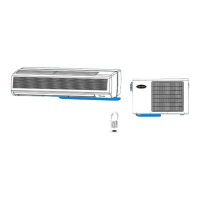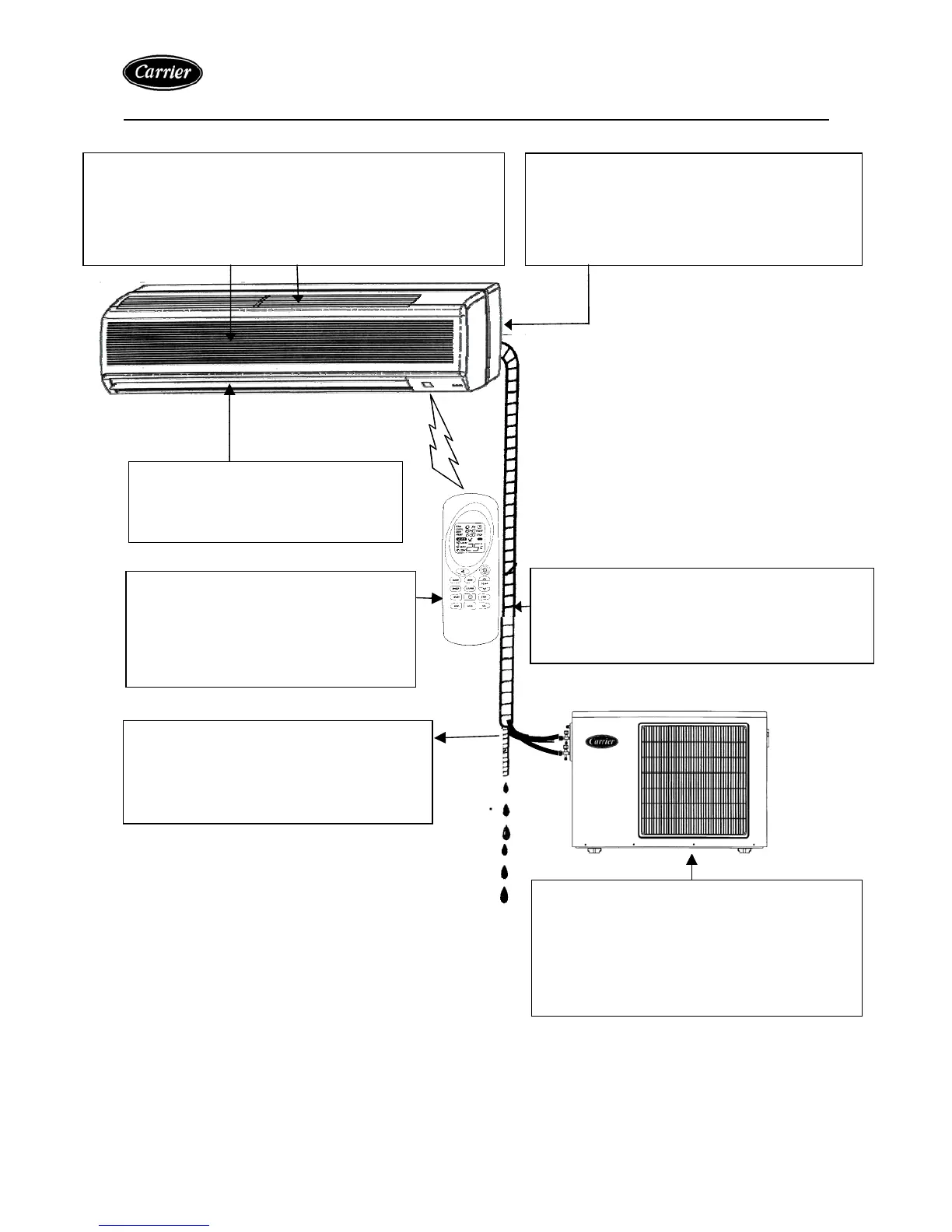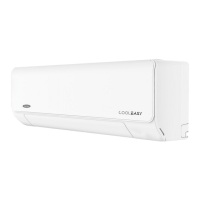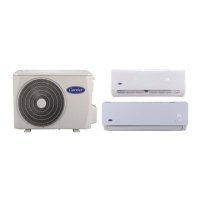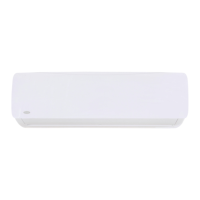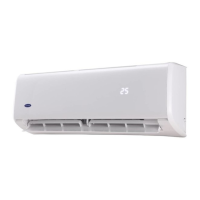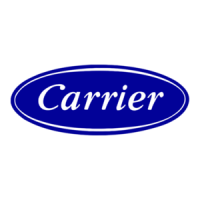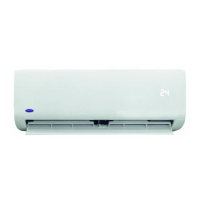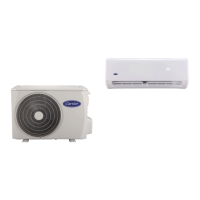3
2. SPLIT SYSTEM DESCRIPTION
(a) INDOOR UNIT
x Mounted inside the space to be air-conditioned.
x In summer it filters, dehumidifies and cools air.
x In winter it filters and heats air.
(g) DRAIN HOSE
x Drain the water condensated in the indoor
unit during cooling operation to the outside.
Fig. (1)
HI WALL SPLIT SYSTEMS
53QH-H SERIES HEAT PUMP
53QH-C SERIES COOL ONLY
(e) WIRELESS REMOTE CONTROL (LCD)
Controls on/off, mode, and fan speed,
temperature, timer and swing, and sleep
functions.
(b) OUTDOOR UNIT
x Mounted outside the space to be air-
conditioned.
x It contains compressor, fan, motor, condenser
coil, copper tubing and electrical components.
(
) REFRIGERANT PIPING LINES
Insulated copper piping through which refrigerant
R22 flow connects the indoor and outdoor units.
(c) RETURN AIR TO INDOOR UNIT
The return air from the space to be air-conditioned passes
through the front return grille and top the through the anti-
bacteria filters to clean the air from dust and foreign particles
(d) SUPPLY AIR FROM INDOOR UNIT
Cool or warm air comes out of supply
air outlet
